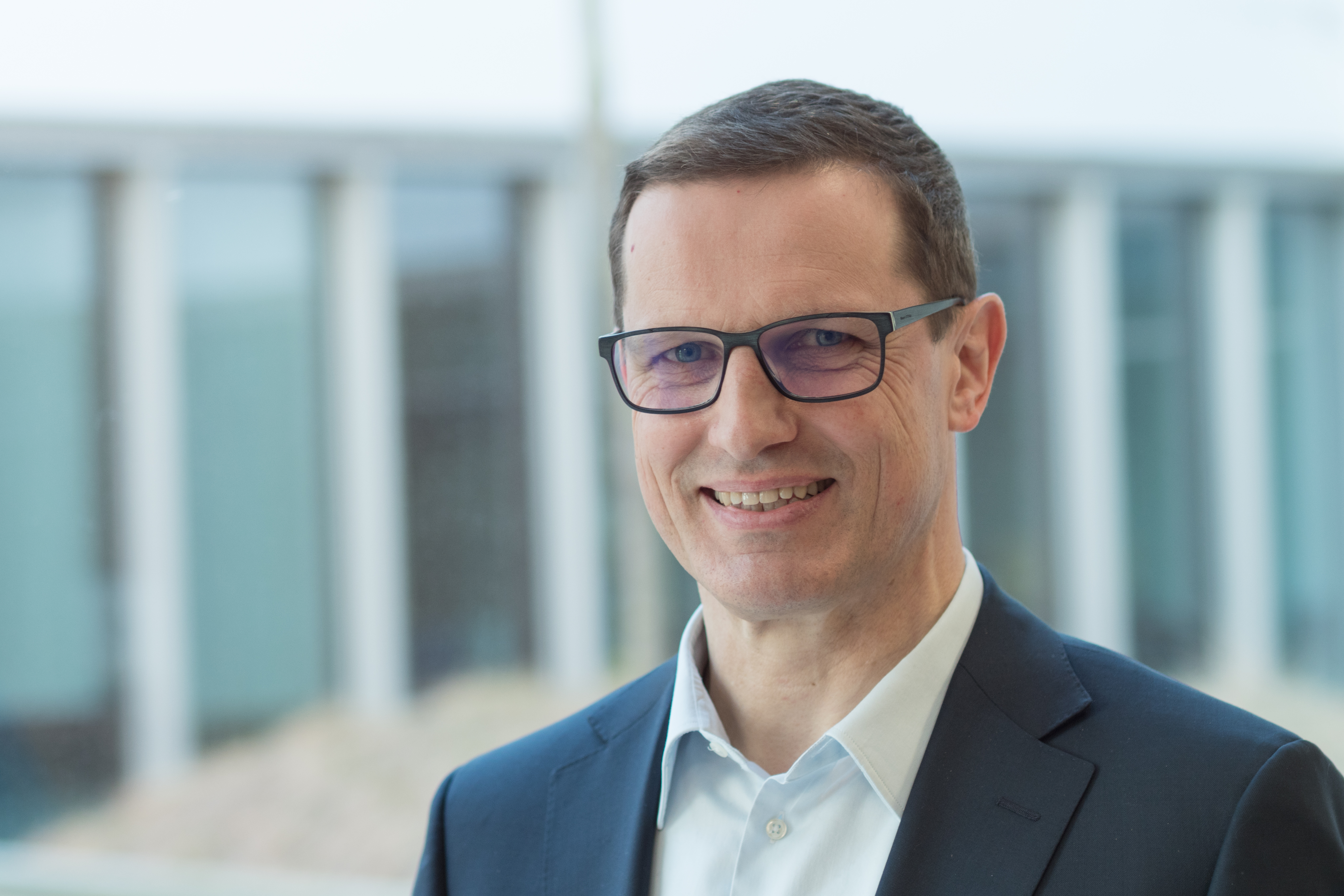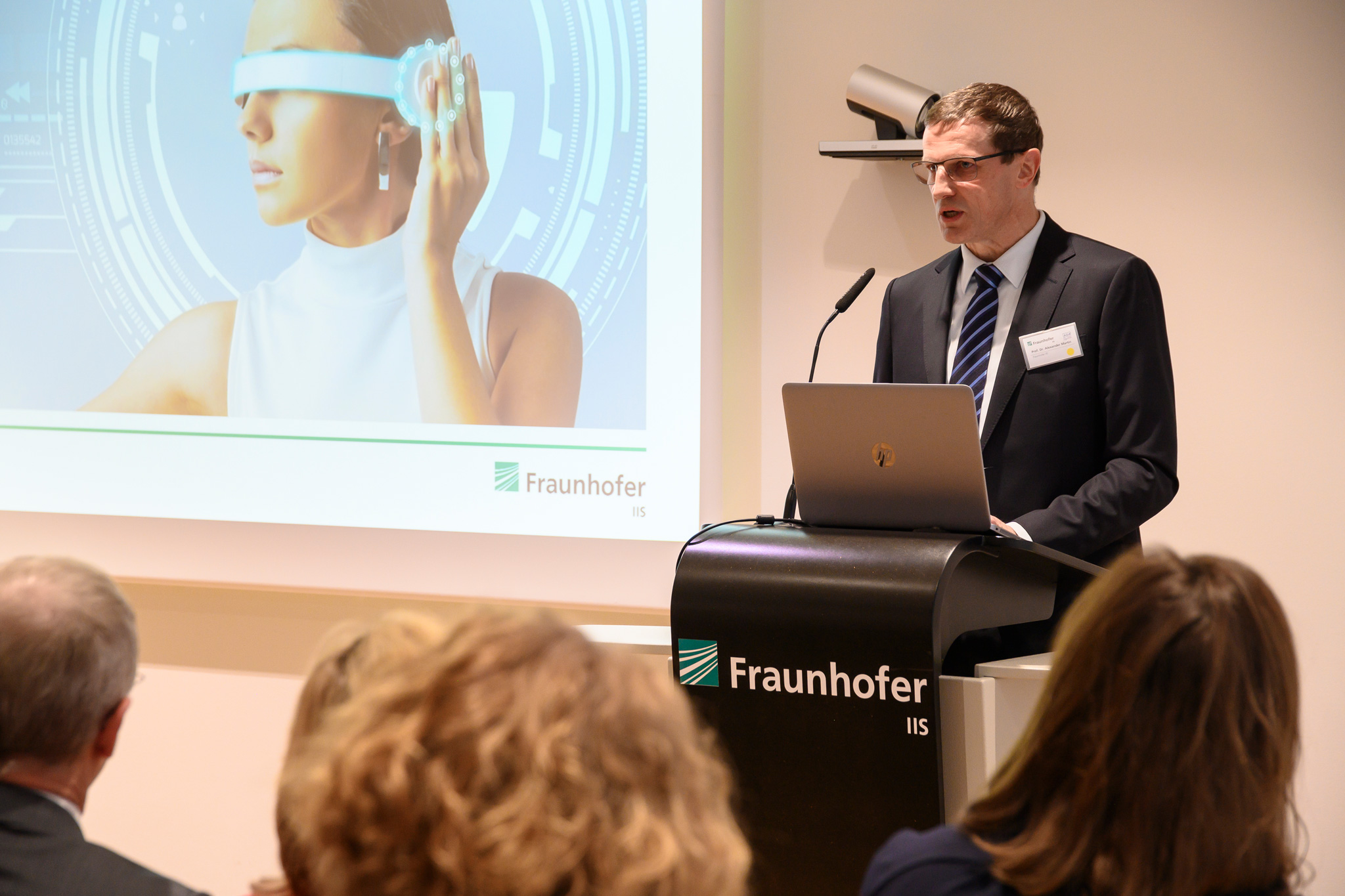

AI for business enterprises
Martin aims to persuade companies to see the vast potential of AI and tap it for industry applications. His tools of choice are mathematical models and powerful algorithms that he believes will help solve tomorrow’s problems. “We already have many inquiries coming in from across all industries, be it the energy sector, logistics, e-commerce or manufacturing. AI methods are being researched and put to beneficial use wherever significant amounts of data are generated,” says Martin. “Bavarian SMEs and even DAX 30 partners, who have their core competence in very different domains, know that they will have to address the topic of AI if they want to future-proof their companies.”
A real-world use case: AI in spare parts logistics
Fraunhofer IIS has collaborated with BSH Hausgeräte GmbH for some years now. This company guarantees a lifetime supply of spare parts for its products – even for those that it no longer makes. But a business simply cannot keep thousands of different spare parts in stock all the time. “This gave rise to the question of if and how it would be possible to forecast long-term demand for spare parts,” says Martin.
This would prove challenging – there was just not enough data available for many spare parts such as water hoses for coffee machines and faceplates for washing machines. “So we came up with the idea of clustering products to obtain a larger amount of data that could serve to make forecasts for individual spare parts. That would enable far more accurate predictions and a significant reduction of warehousing costs, which had been very steep.” The researchers’ focus in all this is very much on handling data in a way that uses resources sparingly.
Resource-efficient data handling
“Simply operating the Internet and Internet-enabled devices produces emissions on par with domestic air traffic in Germany, so we have to be careful about how we handle all this data,” says Martin. Given the fast-rising tide of data, this will hold true for many tomorrows to come. The importance of big data is unlikely to wane in the decade ahead. Fraunhofer IIS knows all about data and how to handle it; Martin believes this is what sets the organization apart. “Fraunhofer IIS is one of the few institutes that can cover and research the entire data lifecycle. We see the data lifecycle as being much like a product lifecycle. It encompasses collecting, transferring and blending data, analyzing and optimizing things with data, and finally, interpreting and putting data to good use. Of course, recycling is also relevant in this context – that is, the question of which data should be recycled and how this is to be done in the interests of resource efficiency.”
A center devoted to efficient data handling
Martin heads up the ADA Lovelace Center for Analytics, Data and Applications, which opened in early December 2019. Its name pays tribute to British mathematician Ada Lovelace, a 19th century pioneer who is credited with having developed the first programming language.
Funded by the Bavarian Ministry of Economic Affairs, the ADA Lovelace Center provides a collaborative platform where science and industry can come together to combine AI research and AI applications in an innovative way. Fraunhofer IIS teamed up with the FAU Erlangen-Nürnberg and the LMU München to create this unique research infrastructure in Bavaria. The Fraunhofer Institutes IKS and IISB and several international partners are also stakeholders in this center. Underpinned by eight pillars of competence that include machine learning, explainable learning, neural networks and mathematical optimization, it develops AI-driven processes with practical applications in mind.
“In times when data streams are constantly rising and enterprises are mining their data troves to extract valuable information on which to base their decisions, data analysis methods and practices have to be advanced – certainly beyond the limits of what is feasible now,” says Martin. He is quick to point out what he means by this: “I am interested in the problems that have yet to be solved, that are taking methods to their limits. This way, we can shift the boundaries of solvability just a little.
The interview was conducted by Ilona Hörath.
